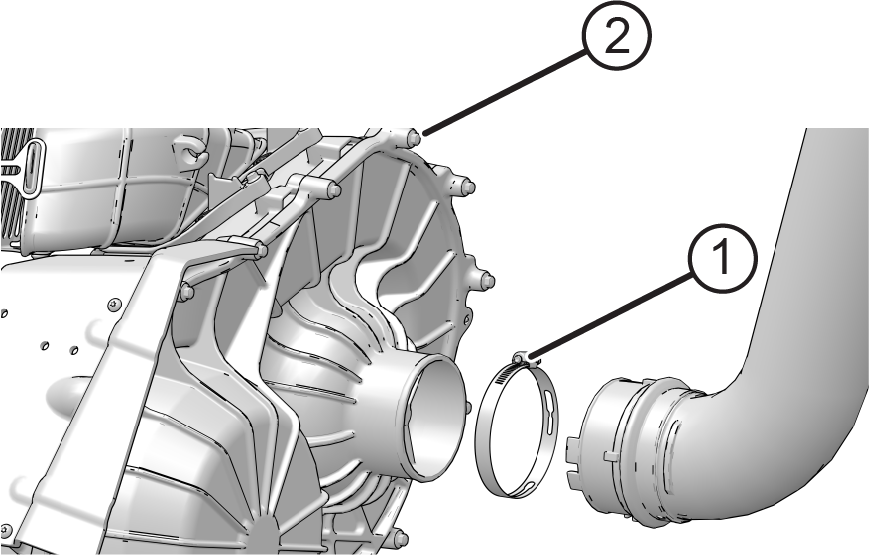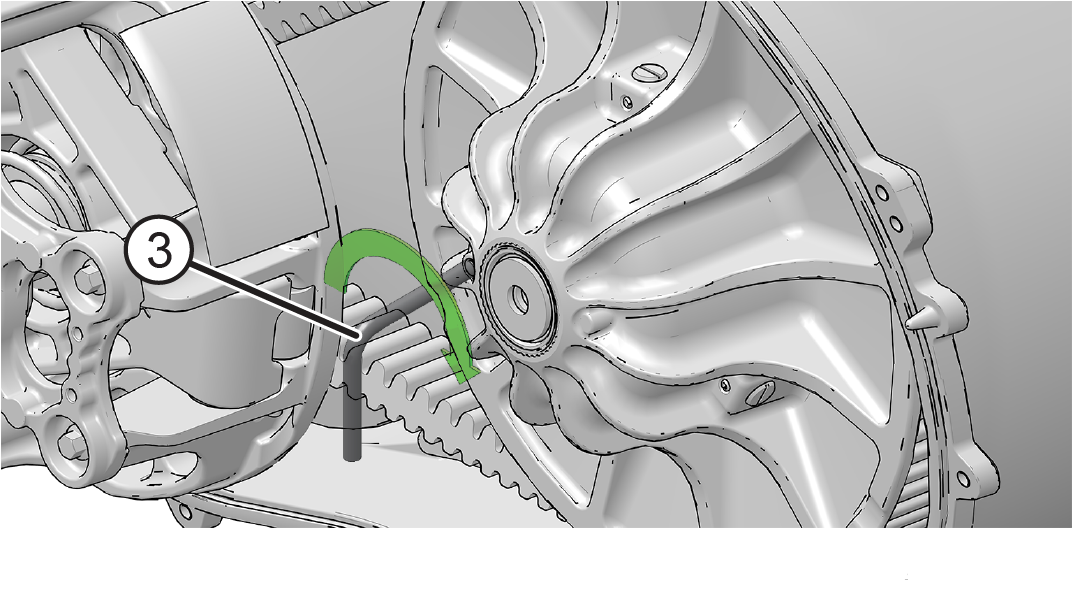Belt Replacement / Debris Removal
If a belt fails, always clean any debris from the outlet duct and from the clutch and engine compartments when replacing the belt.
-
Allow hot components to cool before performing this procedure.
-
Remove the engine access panel and thoroughly clean ALL debris from the engine compartment.
NOTEIf the vehicle is on solid ground, removal of the left rear wheel or shock is not necessary for belt replacement. If the vehicle is on a lift, the shock must be removed in order to remove the clutch cover. -
Loosen the clamp 1 retaining the PVT inlet duct to the outer clutch cover.
-
Remove the fourteen (14) clutch cover screws 2.

-
Maneuver the outer clutch cover outward to access the drive belt.
-
Mark the drive belt direction of rotation so that it can be installed in the same direction.
-
Insert the clutch spreader tool 3 into the driven clutch. The tool is provided in the tool kit.

-
Turn the tool clockwise to open the sheaves on the driven clutch.
-
Walk the belt out of the driven and drive clutch. Remove the belt.
-
Remove ALL debris wrapped in and around the PVT system.
-
Remove ALL debris from the entire clutch air duct passage.
-
Check for signs of damage to seals on the transmission and engine. If any seals appear to be damaged, your vehicle requires prompt service. Your POLARIS dealer can assist.